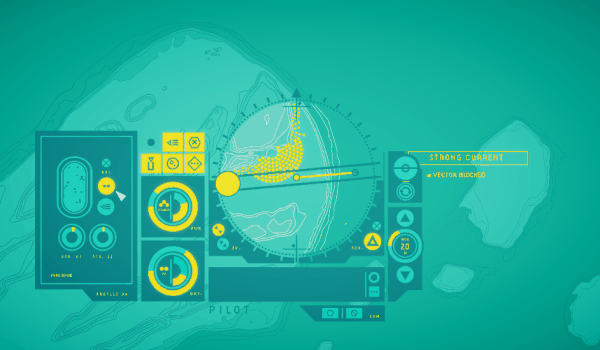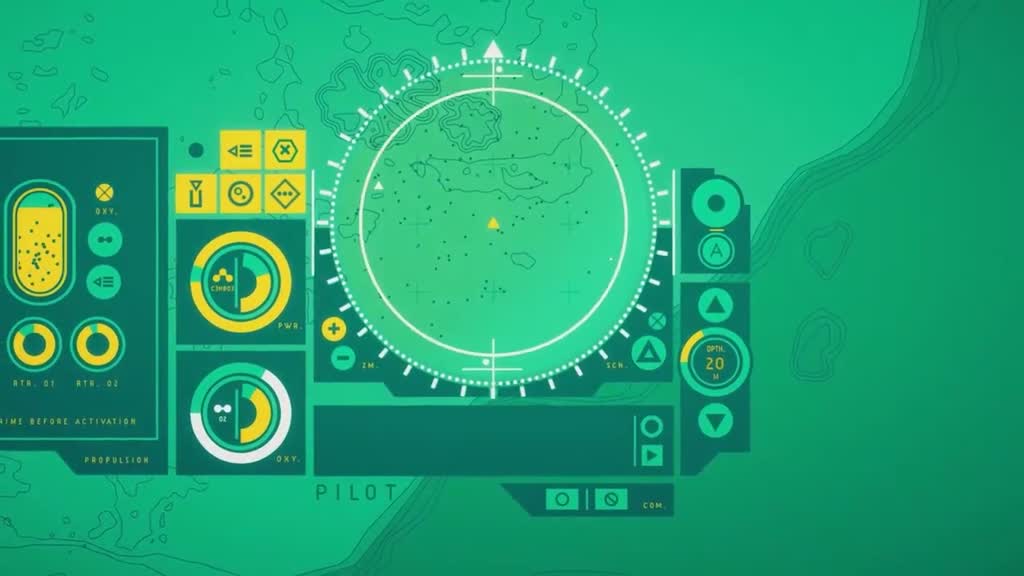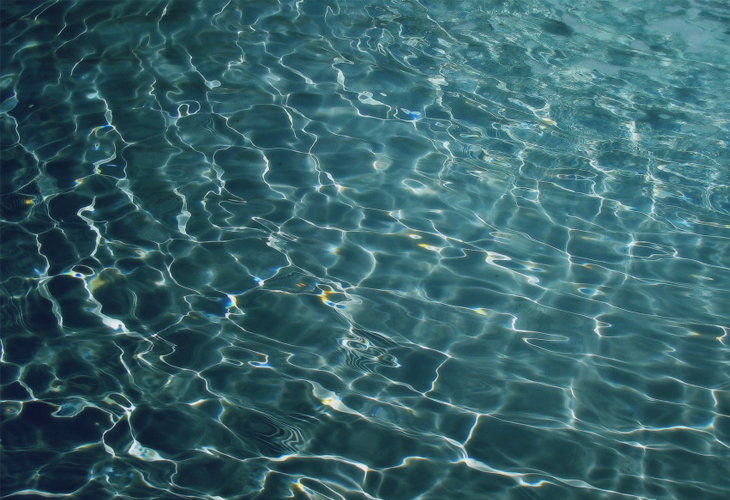In Other Waters (Full) Latest Version Download In Other Waters, a beautiful and calm indie adventure game, you take on the role of a wrist computer. You are an artificial intelligence dedicated to helping a researcher named Ellery in her exploration of the ocean depths. The girl is a xenobiologist who studies extraterrestrial life forms. Sewage and other water pollutants. Water bodies can be polluted by a wide variety of substances, including pathogenic microorganisms, putrescible organic waste, plant nutrients, toxic chemicals, sediments, heat, petroleum (oil), and radioactive substances.Several types of water pollutants are considered below.


In Other Waters offers a clever fusion of exploration, problem solving and sci-fi narrative adventure as you take on the role of a diving suit AI that assists a biologist as she explores under the sea in a strange alien planet.
After her partner goes missing while exploring the ocean floor on an uncharted alien planet, Ellery Vas sets out in search for her. She's using an antiquated diving suit that has an AI built in which can assist her. Interestingly you don't control Ellery, you control her suit AI – scanning the surrounding area, plotting waypoints, examining local life, synthesising useful materials and chatting to Ellery using a binary yes/no system.
In Other Waters makes for a surprisingly captivating experience as you explore the alien world from an AI's perspective. You don't ‘see' much of the world and its life forms other than the contours and the blips that show up on your sonarscope, but Ellery describes what she sees and your readout tells you about the lifeforms in more detail. It's a great piece of game design that allows you to use your imagination to piece together your own vision of the strange alien planet you're exploring.
The current demo build of In Other Waters offers around 20 minutes of gameplay and really impresses with its clever use of UI and intriguing narrative. Although you'll never have clapped eyes on such an interface before, everything makes sense and it really lets you explore the alien planet in a unique way. An cleverly crafted deep sea sci-fi mystery well worth diving into.

Download The In Other Waters Prototype Here (Windows & Mac)
In Other Waters Downloads

- Process
Our editors will review what you've submitted and determine whether to revise the article.
Join Britannica's Publishing Partner Program and our community of experts to gain a global audience for your work! Jordan K. LanfairSee All ContributorsWater purification, process by which undesired chemical compounds, organic and inorganic materials, and biological contaminants are removed from water. That process also includes distillation (the conversion of a liquid into vapour to condense it back to liquid form) and deionization (ion removal through the extraction of dissolved salts). One major purpose of water purification is to provide clean drinking water. Water purification also meets the needs of medical, pharmacological, chemical, and industrial applications for clean and potable water. The purification procedure reduces the concentration of contaminants such as suspended particles, parasites, bacteria, algae, viruses, and fungi. Water purification takes place on scales from the large (e.g., for an entire city) to the small (e.g., for individual households).
Most communities rely on natural bodies of water as intake sources for water purification and for day-to-day use. In general, these resources can be classified as groundwater or surface water and commonly include underground aquifers, creeks, streams, rivers, and lakes. With recent technological advancements, oceans and saltwater seas have also been used as alternative water sources for drinking and domestic use.
Determining water quality
Historical evidence suggests that water treatment was recognized and practiced by ancient civilizations. Basic treatments for water purification have been documented in Greek and Sanskrit writings, and Egyptians used alum for precipitation as early as 1500 bce.
The elder scrolls online - newcomer pack download free. You can view the remaining time left on your current membership term by going to the account summary page on your Elder Scrolls Online account. By purchasing Crowns, you are receiving a license to use or obtain certain features of The Elder Scrolls ® Online under the terms and conditions of.
In modern times, the quality to which water must be purified is typically set by government agencies. Whether set locally, nationally, or internationally, government standards typically set maximum concentrations of harmful contaminants that can be allowed in safe water. Since it is nearly impossible to examine water simply on the basis of appearance, multiple processes, such as physical, chemical, or biological analyses, have been developed to test contamination levels. Levels of organic and inorganic chemicals, such as chloride, copper, manganese, sulfates, and zinc, microbial pathogens, radioactive materials, and dissolved and suspended solids, as well as pH, odour, colour, and taste, are some of the common parameters analyzed to assess water quality and contamination levels.
Regular household methods such as boiling water or using an activated-carbon filter can remove some water contaminants. Although those methods are popular because they can be used widely and inexpensively, they often do not remove more dangerous contaminants. For example, natural spring water from artesian wells was historically considered clean for all practical purposes, but it came under scrutiny during the first decade of the 21st century because of worries over pesticides, fertilizers, and other chemicals from the surface entering wells. As a result, artesian wells were subjected to treatment and batteries of tests, including tests for the parasite Cryptosporidium.
Not all people have access to safe drinking water. According to a 2017 report by the United Nations (UN) World Health Organization (WHO), 2.1 billion people lack access to a safe and reliable drinking water supply at home. Eighty-eight percent of the four billion annual cases of diarrhea reported worldwide have been attributed to a lack of sanitary drinking water. Each year approximately 525,000 children under age five die from diarrhea, the second leading cause of death, and 1.7 million are sickened by diarrheal diseases caused by unsafe water, coupled with inadequate sanitation and hygiene.
Process
Most water used in industrialized countries is treated at water treatment plants. Although the methods those plants use in pretreatment depend on their size and the severity of the contamination, those practices have been standardized to ensure general compliance with national and international regulations. The majority of water is purified after it has been pumped from its natural source or directed via pipelines into holding tanks. After the water has been transported to a central location, the process of purification begins.
Pretreatment
In pretreatment, biological contaminants, chemicals, and other materials are removed from water. The first step in that process is screening, which removes large debris such as sticks and trash from the water to be treated. Screening is generally used when purifying surface water such as that from lakes and rivers. Surface water presents a greater risk of having been polluted with large amounts of contaminants. Pretreatment may include the addition of chemicals to control the growth of bacteria in pipes and tanks (prechlorination) and a stage that incorporates sandfiltration, which helps suspended solids settle to the bottom of a storage tank.
In Other Waters Download Free
Preconditioning, in which water with high mineral content (hard water) is treated with sodium carbonate (soda ash), is also part of the pretreatment process. During that step, sodium carbonate is added to the water to force out calciumcarbonate, which is one of the main components in shells of marine life and is an active ingredient in agricultural lime. Preconditioning ensures that hard water, which leaves mineral deposits behind that can clog pipes, is altered to achieve the same consistency as soft water.

In Other Waters offers a clever fusion of exploration, problem solving and sci-fi narrative adventure as you take on the role of a diving suit AI that assists a biologist as she explores under the sea in a strange alien planet.
After her partner goes missing while exploring the ocean floor on an uncharted alien planet, Ellery Vas sets out in search for her. She's using an antiquated diving suit that has an AI built in which can assist her. Interestingly you don't control Ellery, you control her suit AI – scanning the surrounding area, plotting waypoints, examining local life, synthesising useful materials and chatting to Ellery using a binary yes/no system.
In Other Waters makes for a surprisingly captivating experience as you explore the alien world from an AI's perspective. You don't ‘see' much of the world and its life forms other than the contours and the blips that show up on your sonarscope, but Ellery describes what she sees and your readout tells you about the lifeforms in more detail. It's a great piece of game design that allows you to use your imagination to piece together your own vision of the strange alien planet you're exploring.
The current demo build of In Other Waters offers around 20 minutes of gameplay and really impresses with its clever use of UI and intriguing narrative. Although you'll never have clapped eyes on such an interface before, everything makes sense and it really lets you explore the alien planet in a unique way. An cleverly crafted deep sea sci-fi mystery well worth diving into.
Download The In Other Waters Prototype Here (Windows & Mac)
In Other Waters Downloads
- Process
Our editors will review what you've submitted and determine whether to revise the article.
Join Britannica's Publishing Partner Program and our community of experts to gain a global audience for your work! Jordan K. LanfairSee All ContributorsWater purification, process by which undesired chemical compounds, organic and inorganic materials, and biological contaminants are removed from water. That process also includes distillation (the conversion of a liquid into vapour to condense it back to liquid form) and deionization (ion removal through the extraction of dissolved salts). One major purpose of water purification is to provide clean drinking water. Water purification also meets the needs of medical, pharmacological, chemical, and industrial applications for clean and potable water. The purification procedure reduces the concentration of contaminants such as suspended particles, parasites, bacteria, algae, viruses, and fungi. Water purification takes place on scales from the large (e.g., for an entire city) to the small (e.g., for individual households).
Most communities rely on natural bodies of water as intake sources for water purification and for day-to-day use. In general, these resources can be classified as groundwater or surface water and commonly include underground aquifers, creeks, streams, rivers, and lakes. With recent technological advancements, oceans and saltwater seas have also been used as alternative water sources for drinking and domestic use.
Determining water quality
Historical evidence suggests that water treatment was recognized and practiced by ancient civilizations. Basic treatments for water purification have been documented in Greek and Sanskrit writings, and Egyptians used alum for precipitation as early as 1500 bce.
The elder scrolls online - newcomer pack download free. You can view the remaining time left on your current membership term by going to the account summary page on your Elder Scrolls Online account. By purchasing Crowns, you are receiving a license to use or obtain certain features of The Elder Scrolls ® Online under the terms and conditions of.
In modern times, the quality to which water must be purified is typically set by government agencies. Whether set locally, nationally, or internationally, government standards typically set maximum concentrations of harmful contaminants that can be allowed in safe water. Since it is nearly impossible to examine water simply on the basis of appearance, multiple processes, such as physical, chemical, or biological analyses, have been developed to test contamination levels. Levels of organic and inorganic chemicals, such as chloride, copper, manganese, sulfates, and zinc, microbial pathogens, radioactive materials, and dissolved and suspended solids, as well as pH, odour, colour, and taste, are some of the common parameters analyzed to assess water quality and contamination levels.
Regular household methods such as boiling water or using an activated-carbon filter can remove some water contaminants. Although those methods are popular because they can be used widely and inexpensively, they often do not remove more dangerous contaminants. For example, natural spring water from artesian wells was historically considered clean for all practical purposes, but it came under scrutiny during the first decade of the 21st century because of worries over pesticides, fertilizers, and other chemicals from the surface entering wells. As a result, artesian wells were subjected to treatment and batteries of tests, including tests for the parasite Cryptosporidium.
Not all people have access to safe drinking water. According to a 2017 report by the United Nations (UN) World Health Organization (WHO), 2.1 billion people lack access to a safe and reliable drinking water supply at home. Eighty-eight percent of the four billion annual cases of diarrhea reported worldwide have been attributed to a lack of sanitary drinking water. Each year approximately 525,000 children under age five die from diarrhea, the second leading cause of death, and 1.7 million are sickened by diarrheal diseases caused by unsafe water, coupled with inadequate sanitation and hygiene.
Process
Most water used in industrialized countries is treated at water treatment plants. Although the methods those plants use in pretreatment depend on their size and the severity of the contamination, those practices have been standardized to ensure general compliance with national and international regulations. The majority of water is purified after it has been pumped from its natural source or directed via pipelines into holding tanks. After the water has been transported to a central location, the process of purification begins.
Pretreatment
In pretreatment, biological contaminants, chemicals, and other materials are removed from water. The first step in that process is screening, which removes large debris such as sticks and trash from the water to be treated. Screening is generally used when purifying surface water such as that from lakes and rivers. Surface water presents a greater risk of having been polluted with large amounts of contaminants. Pretreatment may include the addition of chemicals to control the growth of bacteria in pipes and tanks (prechlorination) and a stage that incorporates sandfiltration, which helps suspended solids settle to the bottom of a storage tank.
In Other Waters Download Free
Preconditioning, in which water with high mineral content (hard water) is treated with sodium carbonate (soda ash), is also part of the pretreatment process. During that step, sodium carbonate is added to the water to force out calciumcarbonate, which is one of the main components in shells of marine life and is an active ingredient in agricultural lime. Preconditioning ensures that hard water, which leaves mineral deposits behind that can clog pipes, is altered to achieve the same consistency as soft water.
Prechlorination, which is often the final step of pretreatment and a standard practice in many parts of the world, has been questioned by scientists. During the prechlorination process, chlorine is applied to raw water that may contain high concentrations of natural organic matter. This organic matter reacts with chlorine during the disinfection process and can result in the formation of disinfection by-products (DBPs), such as trihalomethanes, haloacetic acids, chlorite, and bromate. Exposure to DBPs in drinking water can lead to health issues. Worries stem from the practice's possible association with stomach and bladdercancer and the hazards of releasing chlorine into the environment.
In Other Waters Game Download
In Other Waters Free Download
- key people
- related topics
